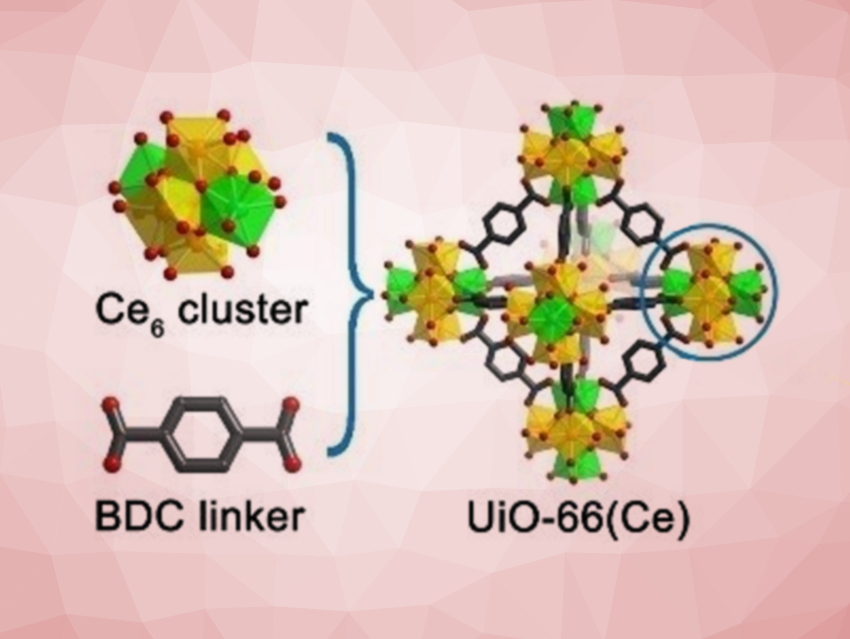Many important physiological processes are regulated by extracellular adenosine triphosphate (ATP) or adenosine diphosphate (ADP). ATP’s and ADP’s use as signaling molecules involves their dephosphorylation with the enzyme apyrase. It is challenging to find biomimetic materials that are satisfactory apyrase mimetics.
Chunzhong Li, Jinlou Gu, and colleagues, East China University of Science and Technology, Shanghai, have discovered that cerium-based metal–organic frameworks (Ce-MOFs) can have excellent apyrase-like properties. The team prepared MOFs of the type UiO-66(Ce) from 1,4-dicarboxybenzene (BDC) ligands and (NH4)2Ce(NO3) in the presence of acetic acid via a solvothermal reaction.
The Ce-MOFs selectively catalyze the dephosphorylation of ATP and ADP under a broad range of working conditions. Cerium(IV)-hydroxo groups are active sites for the polarization and hydrolysis of high-energy phosphate bonds in ATP and ADP (pictured below). Cerium(III) species might work as synergistic sites to attract H2O molecules for the promotion of the hydrolysis process. This work could be helpful for the development of apyrase mimetics, and it might offer a new platform for controlling ATP/ADP-related activities in living organisms.

- Intrinsic Apyrase‐Like Activity of Cerium‐Based Metal‐Organic Frameworks: Dephosphorylation of Adenosine Tri‐ and Diphosphate,
Jian Yang, Ke Li, Chunzhong Li, Jinlou Gu,
Angew. Chem. Int. Ed. 2020.
https://doi.org/10.1002/anie.202008259




